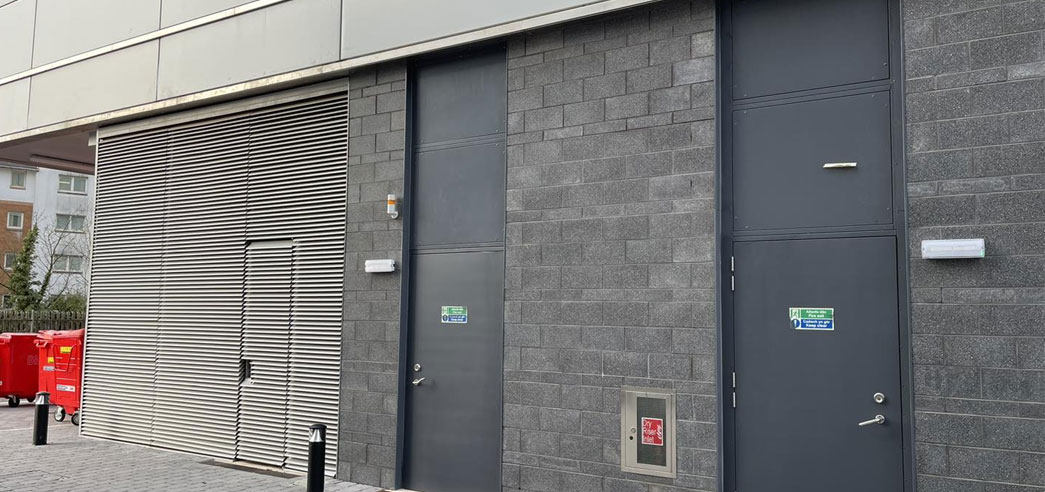When it comes to home or business security, door hardware plays a vital role—yet many people often confuse door latches and door locks, using the terms interchangeably. While both are essential components that ensure a door stays shut or provides security, they function differently and serve distinct purposes.
In this blog, we’ll break down the key differences between door latches and door locks, explore their types and functions, and help you decide which is best suited for your needs.
What Is a Door Latch?
A door latch is a mechanical fastener used to keep a door closed by securing it to the frame without necessarily locking it. It operates through a mechanism that holds the door shut until it’s released by turning a handle, knob, or lever.
Door latches are typically found in both residential and commercial buildings and are primarily designed for convenience, not high-level security.
Common Types of Door Latches:
Spring Latch: Uses a spring-loaded bolt that retracts when the handle is turned. It automatically latches when the door is pushed closed.
Deadlatch: Similar to spring latches but includes a guard bolt to prevent tampering.
Slide Bolt Latch: A simple bolt that slides into a catch, often seen on gates or bathroom doors.
Barrel Bolt: A manual bolt often used on internal doors like bathrooms or bedrooms for privacy.
What Is a Door Lock?
A door lock, on the other hand, provides security by physically preventing unauthorized access. It typically includes a mechanism that requires a key, code, or electronic authentication to engage or disengage.
Door locks are commonly used on exterior doors, safes, or any entry point that needs to be secured against intrusion.
Common Types of Door Locks:
Deadbolt Lock: A solid locking mechanism that doesn’t rely on springs—popular for front doors.
Knob Lock: Often used in conjunction with a deadbolt, this lock is built into the door handle.
Mortise Lock: A robust lock fitted into a pocket within the door, commonly used in commercial buildings.
Smart Locks: Use Wi-Fi, Bluetooth, or keypad entry and can be controlled remotely via smartphones.
Where to Use Door Latches
Door latches are ideal for interior doors or spaces that don’t need high security but do require doors to remain shut. Some examples include:
- Bathroom doors (using privacy latches)
- Closets or pantries
- Garden or utility gates
- Temporary room partitions
The appeal of latches lies in their ease of use, quick installation, and affordability. They’re perfect for situations where accessibility is more important than restriction.
Where to Use Door Locks
Door locks, especially deadbolts and smart locks, are essential for exterior doors and rooms that house valuable or sensitive items. Ideal uses include:
- Front and back doors
- Garage entry points
- Office entrances
- Safes and lockers
- Bedrooms (for added privacy and safety)
Locks are best when you want reliable protection from theft, unauthorized access, or break-ins.
Can a Door Have Both?
Absolutely! In fact, most doors—especially entry doors—feature a combination of both latch and lock mechanisms. For instance:
- A standard residential door might have a knob with a spring latch and a deadbolt lock above it.
- Commercial doors often use mortise locks that integrate both functions in one compact system.
This dual setup ensures both convenience and security—the latch allows for quick closing, while the lock protects against unauthorized access.
How to Choose Between a Latch and a Lock
Choosing between a door latch and a door lock depends on your specific requirements:
Choose a Door Latch If:
- You need a simple mechanism to keep a door closed.
- You want a budget-friendly solution.
- The door is in a low-risk area.
- Ease of use and accessibility are top priorities.
Choose a Door Lock If:
- Security is your main concern.
- The door leads to an external area or sensitive room.
- You need controlled access (via key, code, etc.).
- You want peace of mind against break-ins.
Aesthetic and Material Considerations
Both door latches and locks come in a variety of finishes such as brushed nickel, matte black, bronze, chrome, and brass—making it easy to match your hardware with your overall décor.
From a material standpoint, high-quality options made from stainless steel, zinc alloy, or brass will last longer and perform better under frequent use.
Modern Innovations
In today’s smart home era, even door locks have evolved with technology:
- Smart Locks allow remote control via smartphone apps.
- Biometric Locks use fingerprints for access.
- Keyless Entry Systems eliminate the need for physical keys.
Some modern door latches also integrate magnetic or soft-close features for a more luxurious user experience.
Final Thoughts
While they may seem similar, door latches and door locks serve very different roles in home and office security. A latch is perfect when you simply need a door to stay closed, while a lock is essential when you need to control access and ensure safety.
Understanding the function, security level, and proper use cases of both options will help you make the right decision when outfitting your property with the appropriate hardware. Whether it’s the convenience of a latch or the peace of mind from a lock, the right choice can enhance both the safety and functionality of your space.

